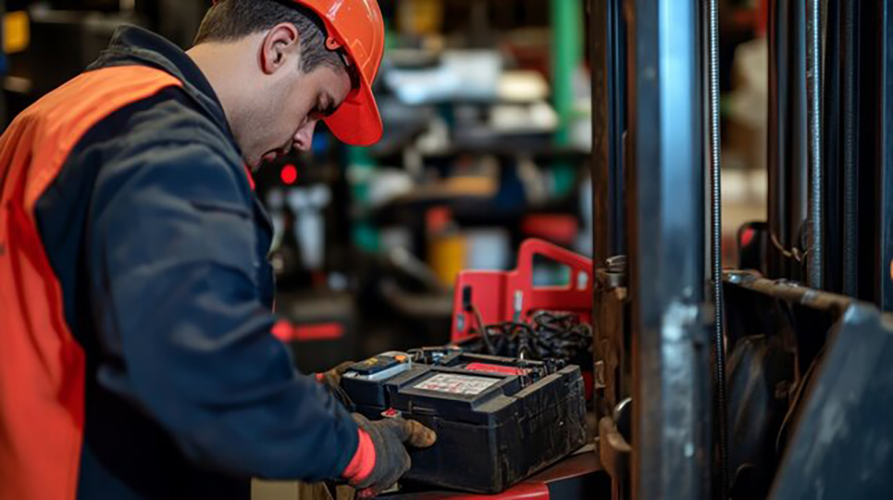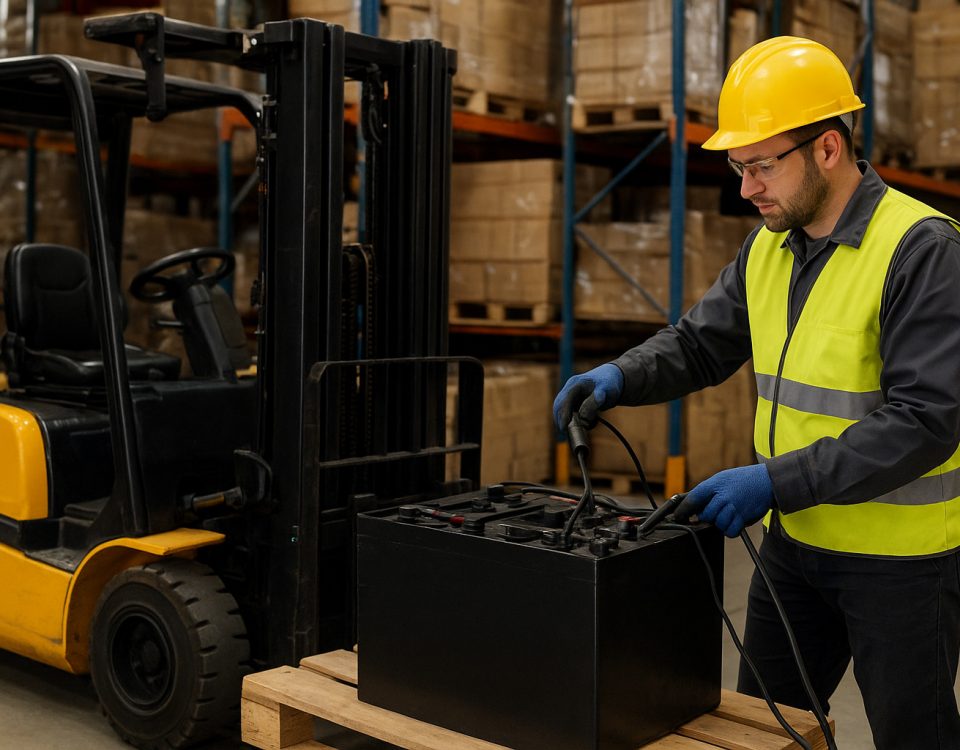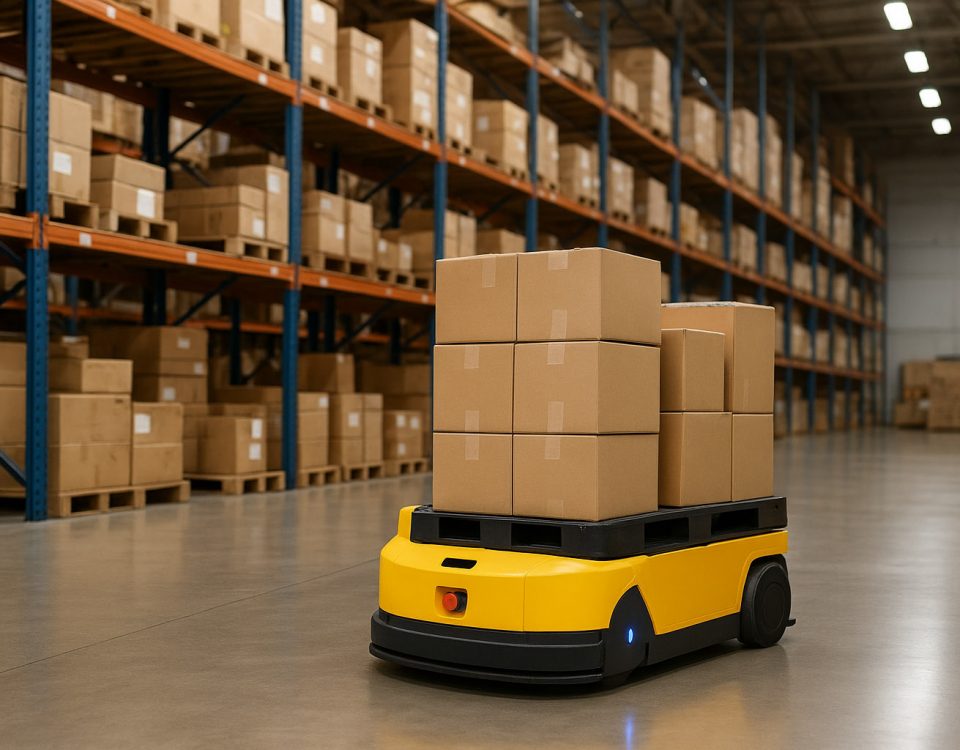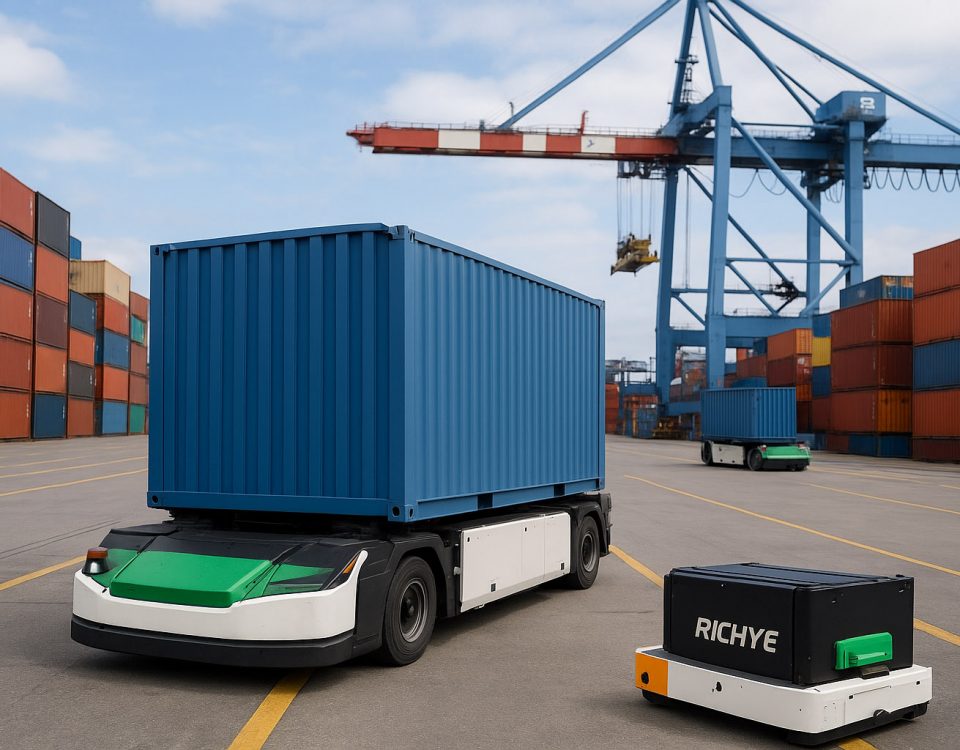Las baterías de carretillas elevadoras son componentes esenciales que alimentan las carretillas elevadoras eléctricas, proporcionando la energía necesaria para operaciones eficientes de manipulación de materiales en almacenes y centros de distribución. Al igual que cualquier otra pieza crucial del equipo, el mantenimiento adecuado de las baterías de carretillas elevadoras es necesario para garantizar su longevidad, optimizar el rendimiento y evitar costosos tiempos de inactividad. En este artículo discutiremos algunas de las mejores prácticas para el mantenimiento de las baterías de carretillas elevadoras, ofreciendo ideas que ayudarán a las empresas a maximizar la vida útil de sus baterías y minimizar la necesidad de reemplazos o reparaciones frecuentes.
1. Inspección y control periódicos
La inspección rutinaria es uno de los aspectos fundamentales de batería de carretilla elevadora mantenimiento. Comprobar periódicamente el estado de la batería le permite identificar posibles problemas antes de que se conviertan en problemas graves. Durante las inspecciones, céntrese en lo siguiente:
-
Terminales y cables de la batería: Asegúrese de que los terminales de la batería están limpios, libres de corrosión y correctamente apretados. Las conexiones flojas o corroídas pueden provocar un rendimiento deficiente y potencialmente dañar la batería.
-
Niveles de líquido: Para las baterías de plomo-ácido, es crucial mantener los niveles correctos de electrolito. El líquido debe cubrir las placas para evitar que queden expuestas al aire, lo que puede hacer que se sequen y pierdan eficacia. Compruebe y rellene regularmente los niveles de líquido con agua destilada según sea necesario.
-
Estado de carga: Controlar el nivel de carga de la batería es vital para evitar descargas profundas, que pueden acortar su vida útil. Muchas carretillas elevadoras modernas vienen con diagnósticos a bordo que proporcionan datos en tiempo real sobre los niveles de carga y el rendimiento de la batería.
2. Cargar correctamente
Las prácticas de carga desempeñan un papel importante en la prolongación de la vida útil de la batería de una carretilla elevadora. Estos son algunos consejos clave de carga a seguir:
-
Evitar descargas profundas: Intente evitar descargar la batería por debajo de 20% de su capacidad total, ya que las descargas profundas pueden causar daños irreversibles en las celdas de la batería. Recargar la batería cuando alcance unos 30% de su capacidad suele ser una buena práctica para mantenerla en condiciones óptimas.
-
Utiliza el cargador adecuado: Utilice siempre un cargador diseñado específicamente para el tipo de batería de su carretilla elevadora. El uso de un cargador incorrecto puede provocar una carga ineficaz y dañar la batería.
-
Cobrar fuera de horario: Siempre que sea posible, cargue la batería de la carretilla elevadora durante los periodos de inactividad, como por la noche, para asegurarse de que está lista para su uso durante el día. En realidad, las cargas parciales frecuentes pueden ser más beneficiosas que las cargas profundas e infrecuentes.
3. Mantener unas condiciones de almacenamiento adecuadas
Cuando las pilas no están en uso, es esencial almacenarlas en un entorno adecuado para evitar que se dañen y deterioren. El lugar de almacenamiento debe reunir las siguientes condiciones:
-
Lugar fresco y seco: Almacene las baterías de carretillas elevadoras en un lugar fresco, seco y libre de temperaturas extremas. Las altas temperaturas pueden acelerar la degradación de las celdas de la batería, mientras que las temperaturas bajo cero pueden provocar la cristalización del electrolito, lo que afecta negativamente a la vida útil de la batería.
-
Evitar la inactividad prolongada: Si una carretilla elevadora no se va a utilizar durante un periodo prolongado, asegúrese de realizar una carga completa antes de guardarla. Una batería parcialmente cargada puede perder capacidad si se deja inactiva durante demasiado tiempo.
-
Ventilación: Una ventilación adecuada es esencial en la zona de almacenamiento para evitar la acumulación de gases potencialmente peligrosos, especialmente con las baterías de plomo-ácido, que pueden emitir gas hidrógeno durante la carga.
4. Limpie la batería con regularidad
Mantener su batería de carretilla elevadora limpia es vital para su rendimiento y longevidad. La suciedad, el polvo y los residuos pueden acumularse en la superficie de la batería, especialmente alrededor de los terminales y los cables, lo que puede interferir en su funcionamiento. Para limpiar la batería, siga estos pasos:
-
Apague la carretilla elevadora: Asegúrese siempre de que la carretilla elevadora esté apagada antes de empezar a limpiar la batería.
-
Limpiar con un paño húmedo: Utiliza un paño húmedo para eliminar cualquier resto de suciedad. En caso de suciedad persistente, utiliza una mezcla de bicarbonato de sodio y agua para limpiar los terminales y otras zonas.
-
Comprobación de fugas: La limpieza periódica ofrece la oportunidad de comprobar si hay fugas o signos de daños. Si detecta alguna, solucione el problema rápidamente para evitar complicaciones mayores.
5. Realizar cargos de compensación
Las cargas de ecualización son un procedimiento de mantenimiento que ayuda a equilibrar las celdas individuales de una batería de plomo-ácido, garantizando un rendimiento uniforme en todas las celdas. Este proceso consiste en cargar la batería a un voltaje ligeramente superior al habitual durante un breve periodo de tiempo, lo que ayuda a evitar la sulfatación y a mantener el equilibrio de las celdas. La ecualización debe realizarse periódicamente, según las directrices del fabricante, para mantener la batería en condiciones óptimas.
6. Garantizar una ventilación adecuada durante la carga
Las baterías de las carretillas elevadoras, especialmente las de plomo-ácido, liberan gases durante el proceso de carga. Estos gases pueden ser peligrosos si no se ventilan adecuadamente, por lo que es esencial asegurarse de que la zona de carga esté bien ventilada. Una ventilación inadecuada puede provocar la acumulación de gas hidrógeno, lo que puede suponer un riesgo de incendio o explosión. Siga siempre las instrucciones del fabricante relativas a los procedimientos de carga y asegúrese de que la estación de carga dispone de un flujo de aire adecuado.
7. Invierta en baterías de calidad para carretillas elevadoras
Elegir una batería de carretilla elevadora de alta calidad de un fabricante de renombre puede suponer una diferencia significativa en el mantenimiento y el rendimiento generales de su flota. Las baterías de alta calidad tienden a durar más, requieren menos procedimientos de mantenimiento y rinden mejor en condiciones exigentes.
RICHYE es un fabricante profesional de baterías de litio conocido por producir baterías de litio de alto rendimiento que son altamente fiables y eficientes. Las baterías de litio de RICHYE destacan por su calidad, seguridad y rentabilidad. Su avanzada tecnología garantiza que las baterías rindan a niveles óptimos, proporcionando un valor excelente a las empresas que confían en las carretillas elevadoras para las operaciones de manipulación de materiales. Tanto si está actualizando su sistema de baterías actual como si desea cambiar a una opción más eficiente y sostenible, las baterías de litio de RICHYE son una elección de confianza.
8. Formar a los operarios sobre el cuidado adecuado de las baterías
Los operadores de carretillas elevadoras deben recibir formación sobre la importancia del mantenimiento de la batería y sobre cómo pueden contribuir a la salud de la misma. Esto incluye educarles sobre las prácticas de carga correctas, la necesidad de inspecciones periódicas y la importancia de limpiar y mantener la batería. Una formación adecuada puede ayudar a evitar errores que podrían provocar un fallo prematuro de la batería y prolongar la vida útil del equipo.
Conclusión
Un mantenimiento adecuado de la batería de la carretilla elevadora es esencial para optimizar el rendimiento, reducir el tiempo de inactividad y prolongar la vida útil de la batería. Siguiendo los consejos descritos en este artículo, las empresas pueden asegurarse de que las baterías de sus carretillas elevadoras se mantienen en condiciones óptimas, maximizando el rendimiento de su inversión. Las inspecciones periódicas, las técnicas de carga adecuadas, las condiciones de almacenamiento correctas y la limpieza periódica pueden contribuir en gran medida a mantener la eficiencia de las baterías de carretillas elevadoras. Además, invertir en baterías de alta calidad de fabricantes de confianza como Rico puede proporcionarle más tranquilidad y garantía de rendimiento, lo que, en última instancia, beneficiará a sus operaciones y a su cuenta de resultados.




